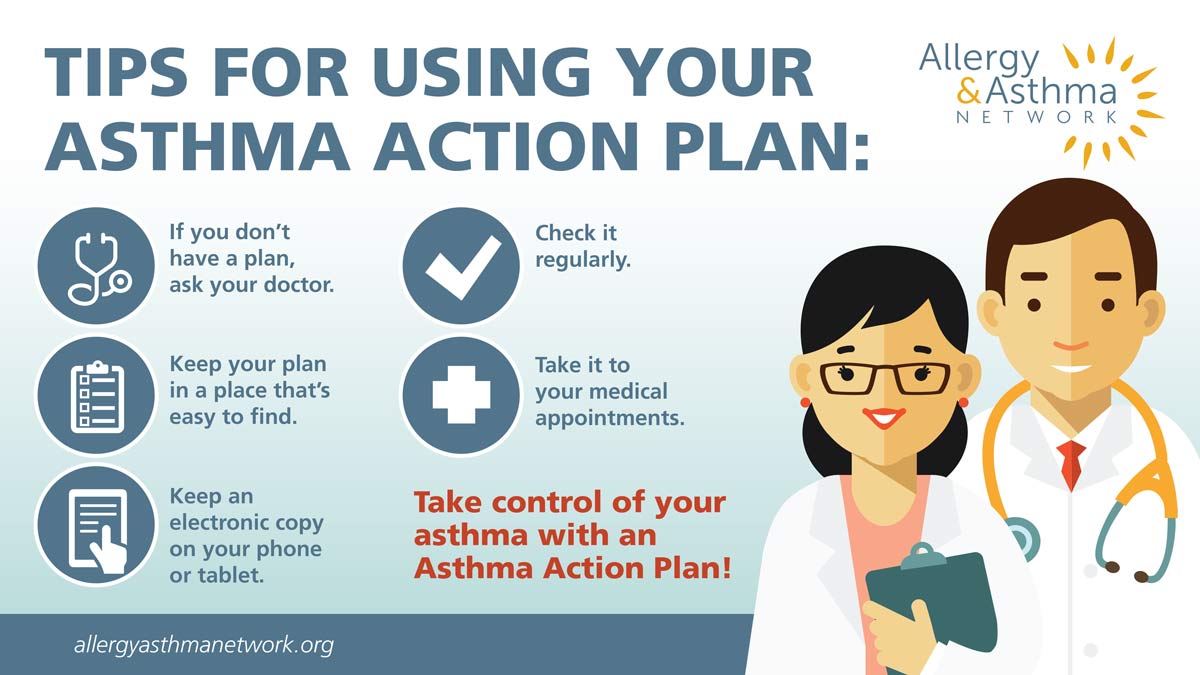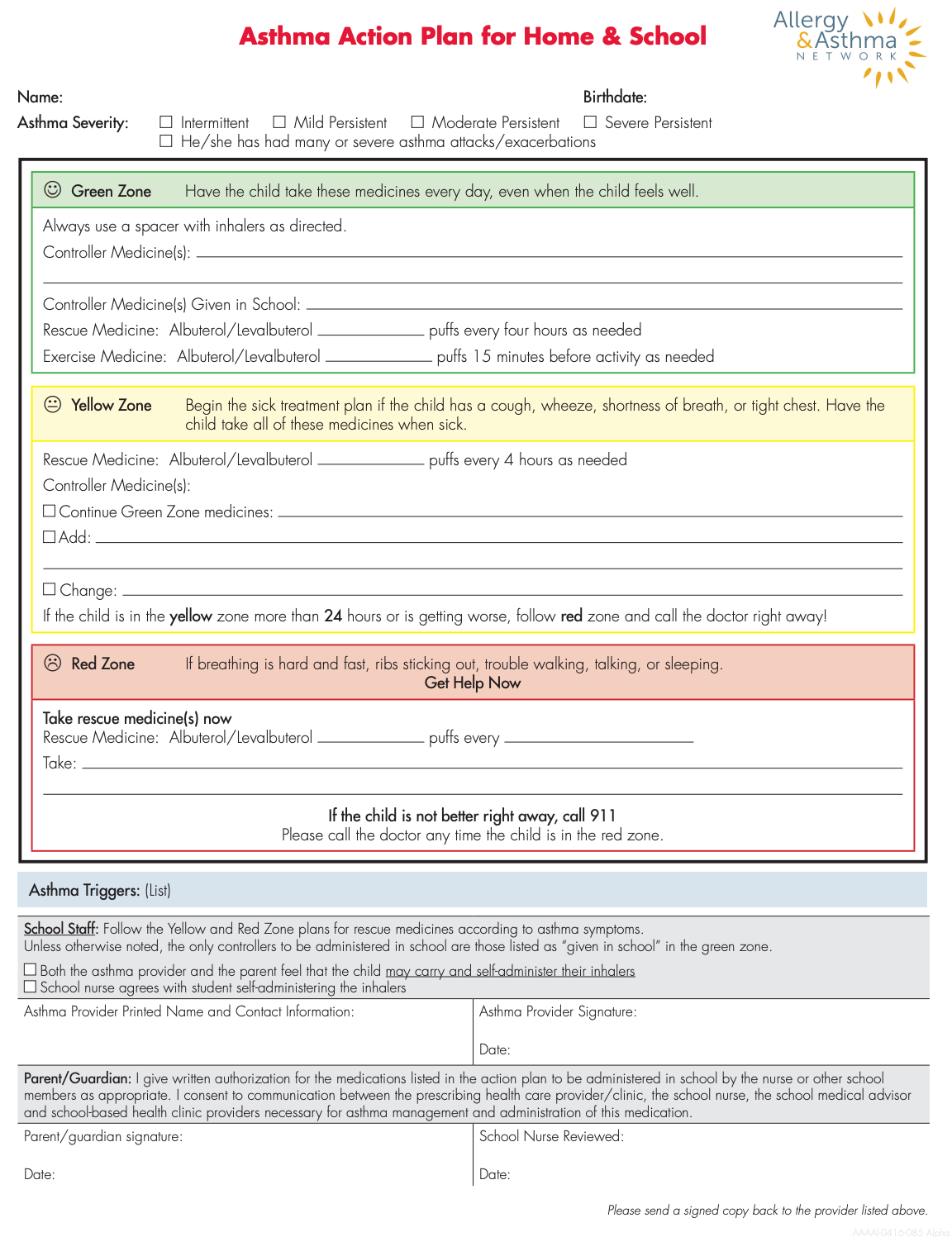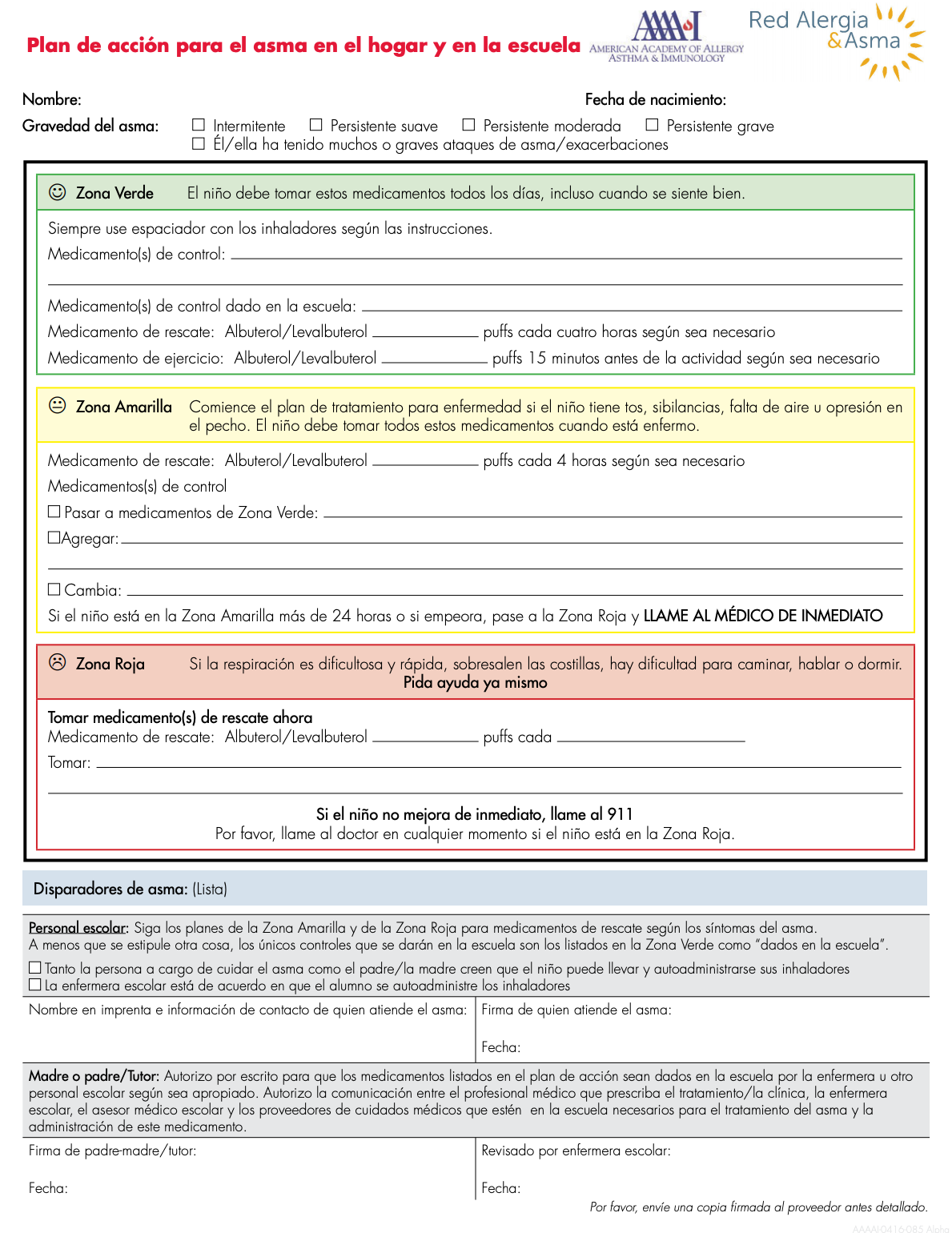What is an Asthma Action Plan?
When you’re diagnosed with asthma, you and your healthcare team will draw up your written personal plan of treatment, called an Asthma Action Plan. If you don’t have one, make an appointment with your healthcare team to develop one as soon as possible.
An Asthma Action Plan should spell out:
- How to treat your asthma daily
- What to do when symptoms get worse
- What to do when you exercise or get sick
Your Asthma Action Plan will change as your asthma improves or worsens. Review the plan with your healthcare provider at every appointment, including follow-up visits when your asthma is under control.
Understanding Your Asthma Action Plan
As you are developing your plan with your healthcare team, go over every detail until you feel comfortable with it. Ask questions. Talk about your concerns. Be sure you understand the following information:
➤ What medicines you should take, especially:
-
- What each is called
- Why you need it
- How much to take
- When to take it
- How to use the inhaler or nebulizer device
- How soon to expect results
- Potential side effects
➤ What allergens and irritants set off your asthma symptoms and how to reduce or eliminate contact with them; how to handle colds and exercise
➤ How to monitor your asthma by tracking symptoms or peak flow readings
➤ How to recognize and handle worsening asthma, including:
- What signs to watch for
- How to adjust medicines in response
- When to seek emergency care from your doctor or the emergency room (ER)
- What numbers to call in an emergency
Who may benefit from an Asthma Action Plan?
All people with asthma benefit from having an Asthma Action Plan. The personalized document takes into account that each person’s asthma is unique and responds to treatments differently.
An Asthma Action Plan is your best tool to protect yourself and/or your children from an asthma attack. Studies show children with an Asthma Action Plan are less likely to have an asthma attack in the past 12 months.
However, many people with asthma do not have an Asthma Action Plan. This is a particular problem in underserved communities. Many Black and Hispanic/Latino American children are less likely to have an Asthma Action Plan than White children.
In addition, Hispanic children hospitalized due to an asthma attack are less likely to receive an Asthma Action Plan at discharge than White or Black children possibly due to language or socioeconomic barriers.
What do I do if I don’t have an Asthma Action Plan?

If you don’t have an Asthma Action Plan, make an appointment with your doctor to ask for one as soon as possible. If you do have one and you’re experiencing symptoms, make an appointment to review your plan and make adjustments if needed.
As you are developing your plan, go over every detail with your doctor until you feel comfortable with it. Ask questions. Review it at every appointment. Talk about what’s working and what could be improved. Your Asthma Action Plan is a living document that changes as your disease improves or worsens. Sometimes it can change with the season, depending on if you have allergic asthma.
If you are more comfortable communicating in a language other than English, ask your doctor or health professional for an Asthma Action Plan in your preferred language (if available). This can help you understand the plan better. It can also improve how well you follow the plan.


Patient education resources from Allergy & Asthma Network

© 2021 Allergy and Asthma Network
Last updated : 6/24/2024